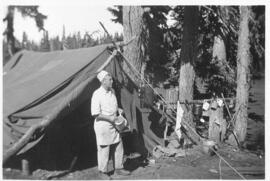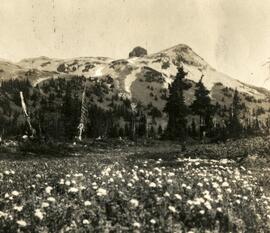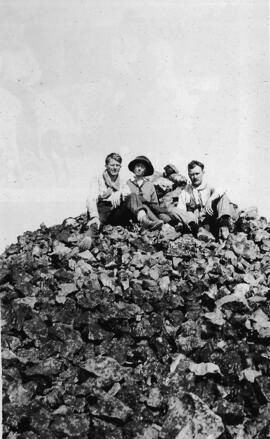Harold O'Connor, George Wallis, and Tom Keogh (cook) at the BC Mountaineering Club's Black Tusk meadows camp, said to be "probably 1930."
For those focused on exploration, a camp cook must have been indispensable. Was the cook one of the untold heroes of these camps? It could not have been easy to cook for a large group of hungry people at roughly 1700 metres (~5500 feet), with basic supplies and probably a lot of insects swarming about. Hope he was paid well.
British Columbia Mountaineering Club
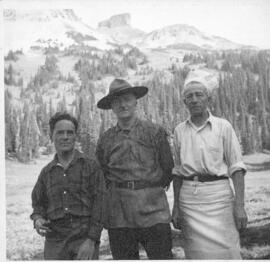
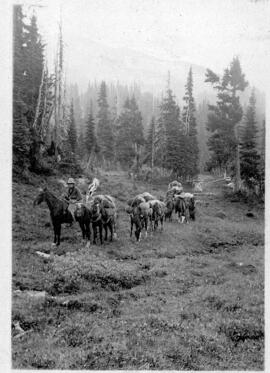

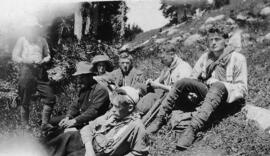
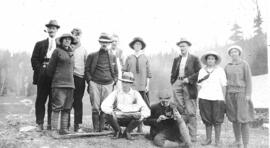
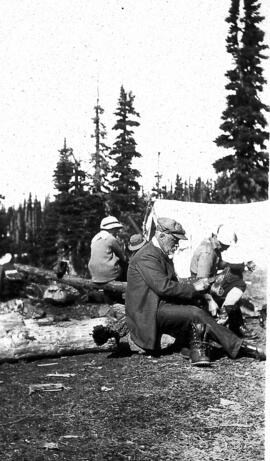
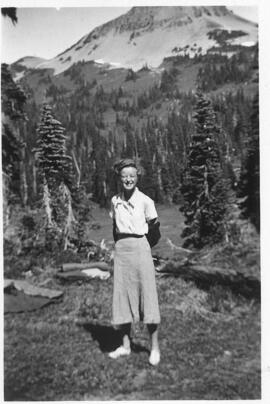
!["The Black Tusk. Garibaldi: Holly and I [Nellie Chapman] climbed part way up this chimney and through the shale which slid from us... rather exciting. Snow in side slope of moving glacier. 1910"](/uploads/r/passion-for-adventure/9/3/7/937418a4305e3393cb9bc6fd89b2fb13aca91cb5feb8162fe780124887d0e155/F205-64-023_142.jpg)

